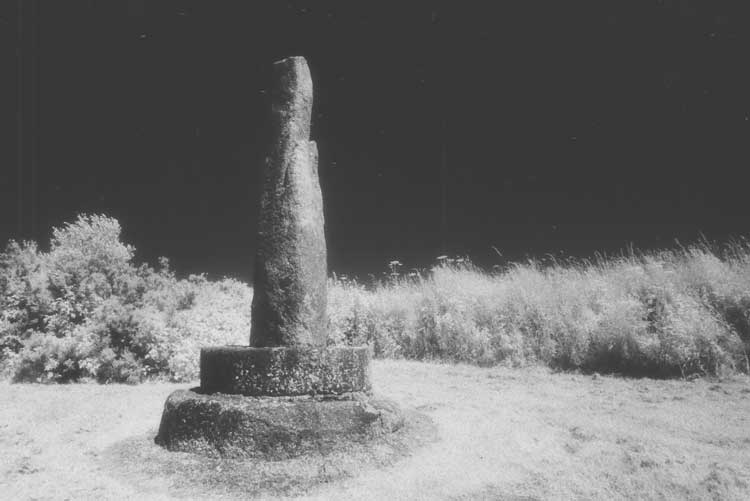
A Mysterious Monolith
The seven-foot tall, weather-beaten monolith known as the Tristan Stone stands by the side of the road between Castle Dore and Fowey and once marked the reputed grave of Tristan, nephew of King Mark of Cornwall.
Tristan's love for Iseult (Isolde) is one of the greatest romances ever told, providing heart-rending inspiration to writers and poets ever since.
When King Mark refused to pay his annual tribute to his overlord, the King of Ireland the latter sent his brother-in-law Marhaus, to Cornwall to demand payment.
Tristan, however, slew this colossal Irishman but received a poisoned wound in the process. None of the court physicians could cure him, so Tristan placed his trust in providence and headed out to sea in a boat without sails nor oars.
Arrival In Ireland
Eventually the vessel washed up on the Irish coast, where the King's beautiful daughter, Iseult the Fair, nursed him back to health, although Tristan kept his identity secret, lest he be recognised as the slayer of her uncle. His strength restored, Tristan bade here farewell and headed back to Cornwall.
Here the barons were demanding that Mark should marry and beget an heir.
One day, two nesting swallows flew past Mark's window and dropped a long strand of golden hair at his feet.
Picking it up, the King told his barons that he would only marry the maiden to whom the hair belonged. Tristan recognised it as belonging to Iseult the Fair and promised to fetch her.
Arriving in Ireland, he found it being terrorised by a fierce dragon, which he killed and the grateful King offered him his daughters' hand in marriage.
A Love Potion
Tristan, however, remained true to his uncle, and took her with him to Cornwall.
But on the way, Tristan and Iseult accidentally shared a love potion intended for the newlyweds on their wedding night. They fell hopelessly in love and, although, the royal marriage went ahead, they remained secret lovers.
Flight Into The Forest
The jealous barons ensured that word of his wife's adultery reached Mark and the lovers fled into the forest where, despite their poverty, they lived in great happiness for three years before the potion wore off and, the two decided that Iseult should return to her husband.
Mark, however, would only accept her back if she swore over the bones of a saint that she had never been unfaithful.
The royal retinue headed for church, en route Tristan, who had disguised himself as a leper, met them and offered to carry the Queen over a river. Iseult climbed onto his back and thus, when she took the sacred oath, the Queen was able to swear that no man had ever been between her thighs except King Mark and the leper.
Tristan though, decided that he owed it to go overseas where, after many adventures, he settled down and took a Breton bride, Iseult of the White Hands.
Wounded In Battle
Then, one day Tristan was mortally wounded in battle and, with the physicians unable to help, he sent for Iseult the Fair, hoping she would again cure him. He told his messenger that, upon the ships return, he must hoist a white flag if Iseult was on board, and a black one if she had refused to come to his aid.
Tristan was at the point of death when the vessel hove into view and he asked his wife what colours it was flying. She lied that the boat was showing a black ensign whereupon Tristan let out a cry of despair and expired. When Iseult the Fair arrived and found him dead she too collapsed and died.
The Grave Of Tristan
Tristan’s body was brought back to Cornwall, where this poignant monument, so legend says, once marked his grave.
And, despite the fact it is unlikely that the Tristan of legend was ever beneath it, no one who gazes upon its sullen countenance can deny that it casts a sorrowful and truly regal aura of the Tristan Stone.

